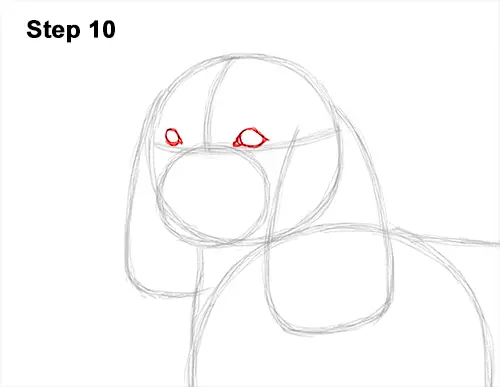
Step 10: Lightly sketch the dog's eyes inside the head as two small circles. Use the initial lines as guides. When you get the size and position of the eyes right, darken the lines. As you darken the shapes, make the sides pointier for the corners of the eyes. Add a curved line over each eye for extra detail.
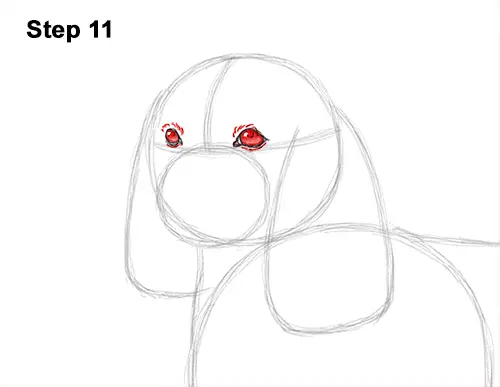
Step 11: Inside each eye, off to the side, draw a tiny circle to represent glare. In the middle of each eye, draw a tiny dot for the spaniel's pupils. Shade the insides of the eyes but don't overlap the tiny glare circles. As you shade, use a value that's a bit lighter than the pupils. Add a series of strokes around the dog's eyes for extra detail on the fur.
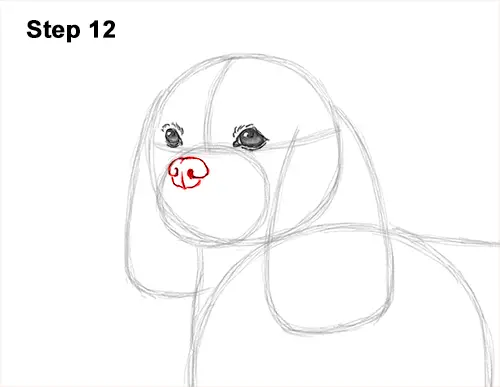
Step 12: Inside the muzzle, near the top, left side, lightly sketch a small oval for the dog's nose. When you get the size and position right, darken the top line but make it wavier. Darken the right side but curve the line inward to create the nostril. Make the bottom part of the shape narrower and add a short, vertical line at the bottom. Darken the left edge and curve the line inward for the other nostril.
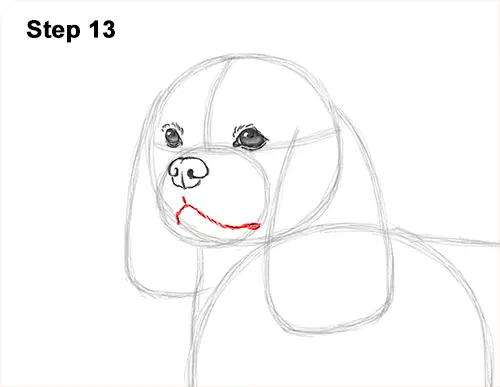
Step 13: Under the nose, draw a line that curves to the right for the first half of the cavalier King Charles spaniel's mouth. The top lip droops down a bit, so dip the line in the middle. The end of the line should stretch all the way to the edge of the initial circle. On the left, draw a smaller, curved line for the other side of the dog's mouth.
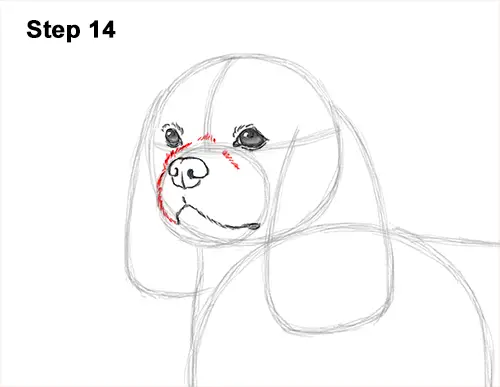
Step 14: Darken the left side of the initial circle to create the shape of the cavalier King Charles spaniel's muzzle. Darken the top part too but use a series of short strokes to indicate fur.







